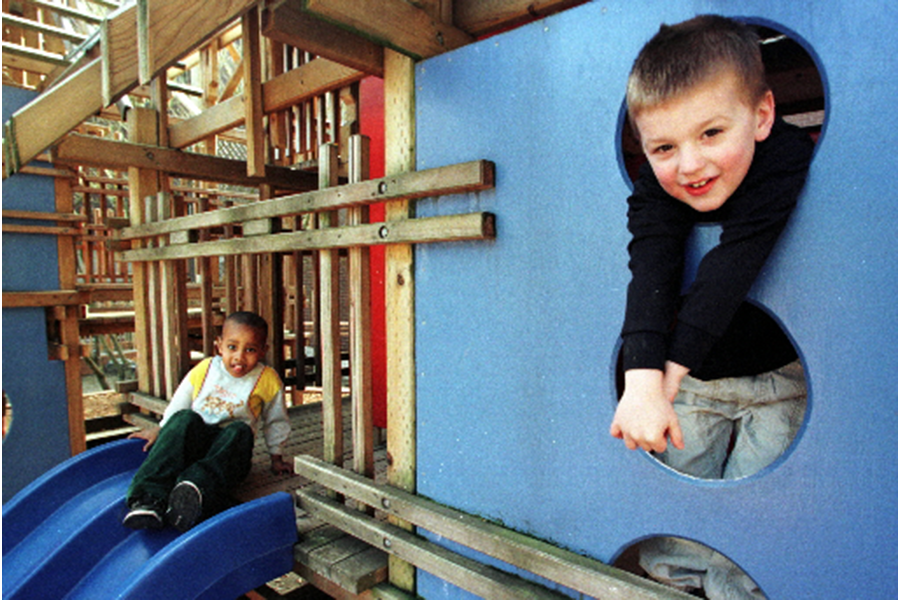A preschool in a nursing home? What the very young can give their elders
Loading...
A documentary about a preschool in Seattle is taking on an unexpected issue: What role might our aging population play in educating the next generation?
"Present Perfect" was filmed by Evan Briggs at Providence Mount St. Vincent, a retirement home to 400, and host to an innovative preschool program called The Intergenerational Learning Center that puts its young students right alongside retirees in playing, reading, and simply spending time.
Residents of "the Mount," Briggs said in an interview with ABC, did a "complete transformation in the presence of the children. Moments before the kids came in, sometimes the people seemed half alive, sometimes asleep. It was a depressing scene. As soon as the kids walked in for art or music or making sandwiches for the homeless or whatever the project that day was, the residents came alive."
Generational segregation is an emerging field of study, suggests a piece in The Boston Globe.
“If you don’t have places where people can connect, if you have institutions that are focused on different age groups,” said Nancy Henkin, executive director of Temple University’s Intergenerational Center, an organization that promotes age-mixing, the result can be “negative stereotypes and people feeling isolated from each other.”
There are other projects with missions similar to that of The Intergenerational Learning Center, says the Globe – "imaginative experiments in creating new kinds of physical spaces where the young and the old can coexist."
These include retirement communities being built near college campuses, such as Lasell Village, a senior housing community built on the campus of Lasell College in Newton, Mass., where seniors can attend lectures and events alongside students. And in Dedham, Mass., an elder care facility – Hebrew SeniorLife – has built a K-8 school in the middle of its community, according to the Globe.
The US Census Bureau projects that by 2029, one in five Americans will be over the age of 65. And by 2056, the population that is 65 years and over is projected to become larger than the population that is under 18.
This progressive growth of the elderly population makes it increasingly important that social services and policymakers strive to meet the needs of the aging. At the same time, say some who work with the elderly, society is too quick to forgot how much the senior generation has to offer.
Briggs, the filmmaker, witnessed firsthand the benefits of integrating young and old.
“Shooting this film and embedding myself in the nursing home environment ... allowed me to see with new eyes just how generationally segregated we’ve become as a society,” wrote Briggs on her Kickstarter page. “And getting to know so many of the amazing residents of the Mount really highlighted the tremendous loss this is – for us all.”







